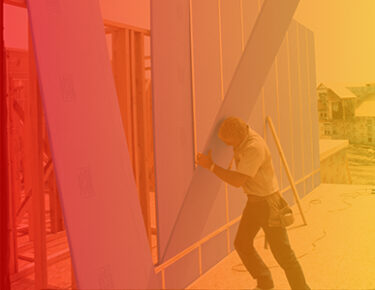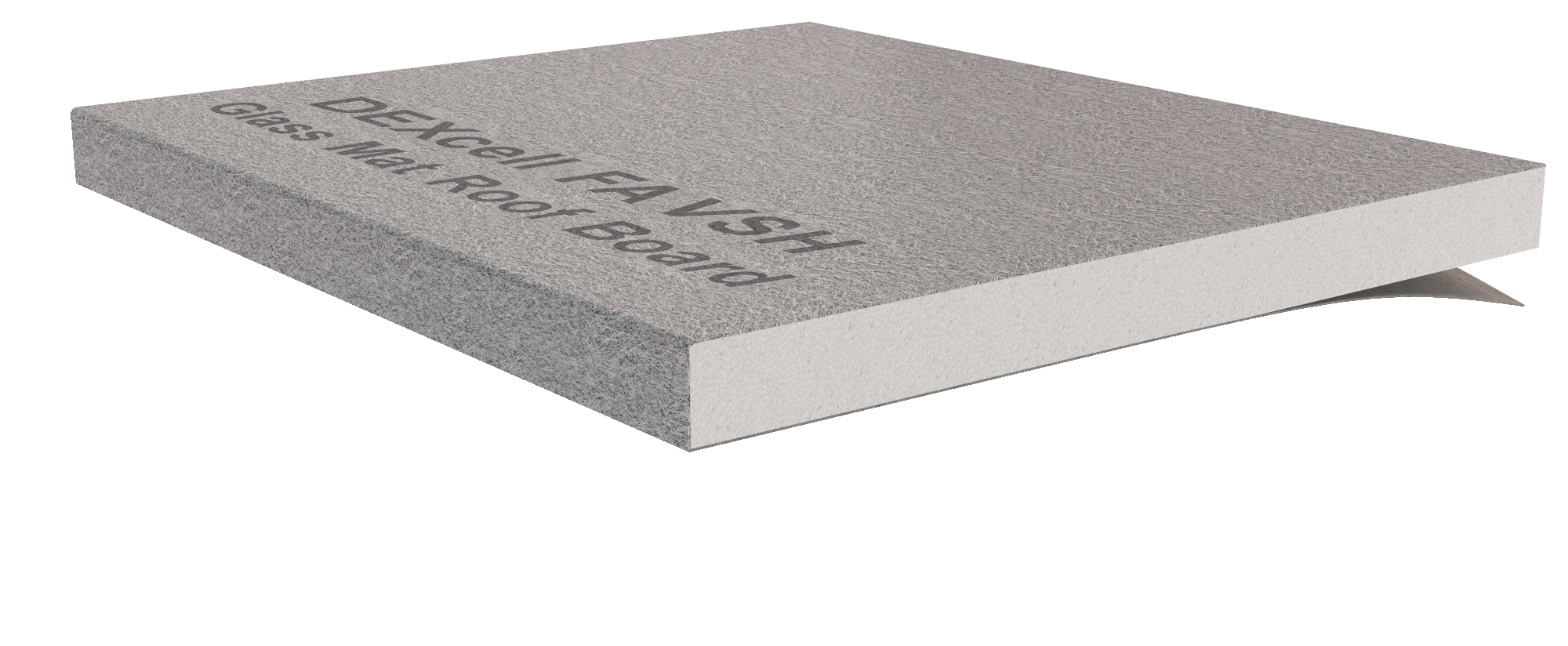 Acoustics
Acoustics
Using roof coverboard to reduce outside sound transmission
Learn about tested roof assemblies to meet indoor environmental quality needs

Whether it’s the roar of an airplane taking off or the rumble of heavy traffic, outside noise pollution can be distracting and stress inducing for building occupants. Studies have shown that long-term exposure to noise pollution can contribute to high blood pressure, loss of productivity and stress-related illnesses.
While local planning departments may try to avoid residential zoning in areas near elevated highways and airports, people working in commercially zoned buildings in these areas can still be affected by persistent transportation noise pollution. Designing roofs that reduce the transmission of airborne sound is one part of creating buildings that provide quality indoor environments that promote health and productivity.
What are the sources of outdoor noise pollution?

Noise pollution is defined as any noise that negatively affects the health and wellbeing of people living and working in a location. You don’t have to live in a city to be exposed to outdoor noise pollution. It takes many forms, including:
- Transportation noise from planes, traffic and railroads
- Construction
- Weather
- Industrial operations
What is the difference between outside noise and inside noise?
Controlling sound from the outside is inherently different from controlling sound transmission between walls inside a building. Inside frequencies tend to be in the higher range from things such as televisions, radios and voices. Outside noises live lower on the frequency range — think the rumbling of heavy trucks passing on an elevated highway and airplane engine acceleration during takeoff.
How are roof assemblies tested for acoustical performance?
Acoustical assemblies, whether roofs, ceilings, walls or floors, are tested using the ASTM E90 Standard Test Method for Laboratory Measurement of Airborne Sound Transmission Loss of Building Partitions and Elements. This test is used to calculate Sound Transmission Class and Outdoor-Indoor Transmission Class ratings.
The ASTM E90 test procedure includes the following steps:
- The test includes a source chamber and a reverberation chamber.
- The assembly is installed in between the two chambers to ensure it provides the only sound transmission pathway.
- A loud, persistent noise is produced in the source room.
- Testers calculate the difference in sound levels between the source and receiving chambers.
What is the difference between Sound Transmission Class and Outdoor-Indoor Transmission Class ratings?
The two acoustic rating systems, Sound Transmission Class and Outdoor-Indoor Transmission Class, measure different frequency ranges:
- STC: Quantifies the ability of the material to resist the transmission of sound, using decibel levels between frequencies of 125 Hz and 4,000 Hz. Higher STC numbers indicate better resistance to sound transmission.
- OITC: Measures sound transfer between outdoor and indoor spaces, using decibel levels between a wider range of frequencies from 80 Hz to 4,000 Hz. Including the lower frequencies means it’s a better measure of low sound frequencies produced by transportation sources.
How does DEXcell® roof cover board help reduce sound transmission from external sources?
Roof assemblies with more high-density materials do a better job of preventing low, rumbling transportation noises from coming inside. Dense materials slow down soundwaves, and DEXcell cement and gypsum roof cover boards rank among the densest materials that can be incorporated into roof assemblies.
National Gypsum Company tested full-scale commercial roof assemblies at NGC Testing Services in Buffalo, New York, to provide the industry with practical and cost-effective solutions. Assemblies ranged from those with open joists and a variety of hat channel and suspended ceiling types. The testing results are below.

Architects and contractors can choose from these pre-tested assemblies to create comfortable indoor environments. For assembly details, you can reference pages 111–112 of The SoundBook®, the industry’s leading resource for technical details and sound-rated assembly drawings all in one place.
DEXcell products used in the tested roof assemblies include:
- DEXcell® Glass Mat Roof Board: Features coated fiberglass facers and enhanced mold-resistant gypsum core.
- DEXcell FA™ Glass Mat Roof Board: Includes heavy-duty, coated fiberglass facers and enhanced mold-resistant gypsum core.
- DEXcell FA VSH™ Glass Mat Roof Board: Has a reinforced gypsum panel with an enhanced moisture-resistant gypsum core and heavy-duty glass mat facers. Approved for use in adhered and mechanically attached single-ply and multi-ply assemblies meeting FM Very Severe Hail Classification.
- DEXcell® Cement Roof Board: Combines Portland cement and aggregate for a lightweight, and mold- and moisture-resistant panel with an exceptionally hard and durable surface.

DEXcell roof coverboards also provide weather and resiliency benefits, including:
- Improved wind uplift rating of the system
- Improved fire resistance
- Reduced impact of foot traffic on the roof
- Smooth surface to install a new roof system in a retrofit application
- Decreased amount of noise entering the building
Download the technical guide to learn more about the benefits of DEXcell Roof Board.
Be the first to hear of new NGConnects blog posts by subscribing here for early access.
Related Blog Posts

Enhancing commercial roof performance with DEXcell Cement Roof Board
Discover how the versatility of DEXcell makes it suitable for nea...
Read MoreRelated Podcasts

Episode 3: Key insights into area separation wall use and construction
From fireblocking and repairs to doors and plumbing, advance your...
Listen Now










